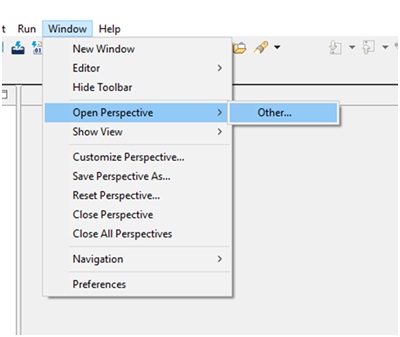

- SALESFORCE ECLIPSE ON MAC HOW TO
- SALESFORCE ECLIPSE ON MAC INSTALL
- SALESFORCE ECLIPSE ON MAC WINDOWS
$ /usr/lib/jvm/java-8-openjdk-i386/bin/java -cp dataloader-38.0.1-uber.jar .DataLoaderRunnerĮxception in thread "main" : Could not load SWT library.

SALESFORCE ECLIPSE ON MAC INSTALL
Of course it doesn’t: $ apt-get install openjdk-8-jdk:i386 The message hints into the direction, that using Debian’s Multiarch features and running an i386 OpenJDK might heal the situation. (LoaderWindow.java:89 ) at .Controller.createAndShowGUI(Controller.java:214)Īt .DataLoaderRunner.main(DataLoaderRunner.java:45) When trying to run the jar on linux anyways, we get a confusing error message: $ /usr/lib/jvm/java-8-openjdk-amd64/bin/java -cp dataloader-38.0.1-uber.jar .DataLoaderRunnerĮxception in thread "main" : Cannot load 32-bit SWT libraries on 64-bit JVMĪt .Library.loadLibrary(Unknown Source)Īt .C. You should have it as a result of following my first article. Our starting point is the uber jar extracted from the Salesforce package.
SALESFORCE ECLIPSE ON MAC HOW TO
Thanks for my readers for pointing that out! In this article I want to fill this gap and provide instructions how to use the graphical tooling. I failed to see that many other people out there want to use the graphical tooling on Linux as well. Linux was the target platform for batch import jobs back then.

I needed them in a concrete project, where we helped a customer to get rid of a commercial integration software. They were the only interesting part for me. When writing my first article, I just focused on using the command line tools. You can use it on Linux without trouble: command line utils as well as the graphical frontend.
SALESFORCE ECLIPSE ON MAC WINDOWS
Salesforce says it’s Windows and MacOS only. Apex Data Loader – is a tool for bulk import and export of data into applications running on the Salesforce platform. This article expands on fixing the graphical tooling as well. Upon successful run, the result should be stored in out.txt folder.In a previous article I wrote about installing and using the Salesforce Data Loader command line tools on Linux. Run WordCount.scala as Scala application. Var map = sc.textFile("data/wordcount/input.txt").flatMap(line => line.split(" ")).map(word => (word,1)) Val conf = new SparkConf().setAppName("Spark Scala WordCount Example").setMaster("local") The output folder contains files with result and status (SUCCESS/FAILURE).

The output is generated at root of the Project, or you may change its location as well. The class would be the following example, we provided input placed at data/wordcount/input.txt. Right click on the project and create a new Scala class. Give a try with all the versions available if you have an issue with Scala version. To change scala version of your project : Java Build Path -> Libraries -> Add Library -> Scala Library -> Choose a lower version than the latest and click on Finish. If you get any errors with the scala version of the eclipse, you may change and give a try.


 0 kommentar(er)
0 kommentar(er)
